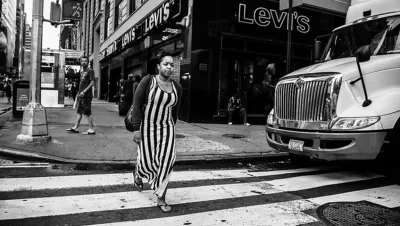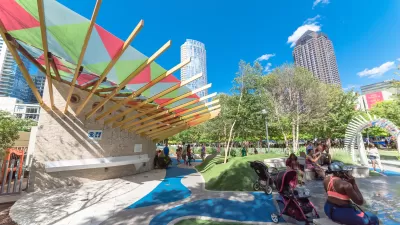You know what racial equity means, but have you heard of 'experiential equity'? Environmental neuroscientist Robin Mazumder explains the term and how it can inform our understanding of equity in the built environment.

Robin Mazumder is breaking new ground in the field of environmental neuroscience, studying the ways in which people experience stress in urban environments. Now, the coronavirus pandemic has added a sense of urgency to Mazumder's research in light of social distancing recommendations that highlight the importance of shared outdoor spaces.
Mazumder's piece illustrates the potential of a young field of study and the author's own focus on racial equity and the study of the lived experiences of marginalized groups. As Mazumder writes, "my experiences of both marginalisation and privilege elucidated the complexity of the human experience, and how that experience can be shaped by barriers created in our social and physical environments. I bring these experiences to my research in environmental neuroscience, where I examine the psychological impacts of our social and physical environments."
Mazumder's work hinges on an important consideration: that not all people experience the built environment and public space in the same way. The pandemic has amplified stress as well as the role of public space to mitigate that stress. Moreover, the recent protests against police brutality and anti-Black racism have "demonstrated the importance of how access to public space can support well-being, the protests demand we ask to whom that public space is open and accessible," says Mazumder.
Pointing to the work of such Black scholars as W. E. B. Du Bois, Dr. Rodney Clark, and Kimberlé Crenshaw, Mazumder acknowledges the role of disciplinary collaboration in furthering the understanding of disparate experiences of the built environment.
Mazumder posits a new term, experiential equity, to "acknowledge the psycho-spatial disparities that exist in the human experience of public space and the associated violence to the body and mind that are caused by these disparities."
Plans are being made to employ the experiential equity framework to inform work on the City of Edmonton’s Zoning Bylaw Renewal for which Mazumder is an advisor.
"This work has just begun and I am keen, and hopeful, that it will provide a tangible example of how experiential equity can be used to facilitate societal change, and to help create urban environments that account for and support everyone’s dignity and well-being," says Mazumder.
FULL STORY: Public spaces are essential – but not yet equal

Alabama: Trump Terminates Settlements for Black Communities Harmed By Raw Sewage
Trump deemed the landmark civil rights agreement “illegal DEI and environmental justice policy.”

Planetizen Federal Action Tracker
A weekly monitor of how Trump’s orders and actions are impacting planners and planning in America.

Why Should We Subsidize Public Transportation?
Many public transit agencies face financial stress due to rising costs, declining fare revenue, and declining subsidies. Transit advocates must provide a strong business case for increasing public transit funding.

Understanding Road Diets
An explainer from Momentum highlights the advantages of reducing vehicle lanes in favor of more bike, transit, and pedestrian infrastructure.

New California Law Regulates Warehouse Pollution
A new law tightens building and emissions regulations for large distribution warehouses to mitigate air pollution and traffic in surrounding communities.

Phoenix Announces Opening Date for Light Rail Extension
The South Central extension will connect South Phoenix to downtown and other major hubs starting on June 7.
Urban Design for Planners 1: Software Tools
This six-course series explores essential urban design concepts using open source software and equips planners with the tools they need to participate fully in the urban design process.
Planning for Universal Design
Learn the tools for implementing Universal Design in planning regulations.
Caltrans
Smith Gee Studio
Institute for Housing and Urban Development Studies (IHS)
City of Grandview
Harvard GSD Executive Education
Toledo-Lucas County Plan Commissions
Salt Lake City
NYU Wagner Graduate School of Public Service





























